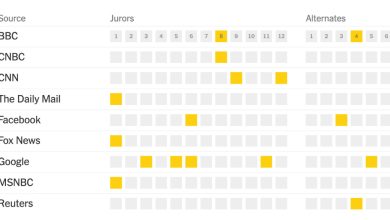What Is It Like to Be a Cat?

Video game marketing, as a rule, relies on the idea that some new frontier has been breached in our journey to completely separate our brains from the dull demands of our bodies. This is true for actually groundbreaking classic games like SimCity and Braid, but also applies to games that get rereleased year after year after year with minor tweaks. As a result, an industry that has had very few widespread advances in the past 20 years ends up talking about itself in almost revolutionary terms. This is Madden like you’ve never seen it before!
These are all lies — I have played hundreds of hours of Madden and can report that there is no version of either that I have not seen before. I enjoy playing video games, but I play them like I drink coffee: regularly, with minimal discretion or taste, and even less stimulation. Most of the time I am just pressing buttons to see some little avatar of myself do something on the screen.
For the past week, my wife, 5-year old daughter and I have been playing Stray, which, as of this printing, is one of the best-reviewed games of the year. The sell is very simple: You are an orange cat. Not a cartoon cat that tells jokes and carries around guns, but just a regular cat who scratches couches, naps and jumps in boxes. There’s a very long and honestly somewhat flat story line that involves androids, an apocalypse and mutant rats, but none of that really matters. Stray is a hit, in large part, because gamers feel like this is what being a cat must really be like. It reminded me a bit of the 1988 French film “The Bear,” which tried to show the life of two real bears who acted like bears and did not speak English or break out into song or whatever. The point is that you don’t need an anthropomorphized version of the animal — this is the real thing.
The “realness” of Stray is apparently so complete that it puts some real cats in an almost hypnotic trance as they watch the unnamed video game cat amble around a postapocalyptic landscape. (This did not happen to my 13-year-old cat, Bobbi, who, like most real cats, spends her days peeing on the bathroom floor next to her litter box, pooping in the garden and cannot be bothered to pose for videos.)
I want to dwell for a moment on this idea of realism in video games because I’m not sure it’s a particularly worthwhile pursuit to just make games that almost perfectly mimic an actual thing. One of the most impressive and mind-bending games I’ve played was called Braid, an independently produced 2008 title in which you control a little man in a blazer as he hops around a castle filled with puzzles. You solve these puzzles by manipulating time — you have the power to rewind time but keep certain objects stuck in the present, which then changes the conditions of the game in a butterfly effect type of way. Braid changed the dimensions of gaming and proved you could exist in multiple realities at once. This effect was so disorienting and powerful that after playing the game for a few hours, I went downstairs to fix myself a sandwich and found that I could not perform the task without reminding myself the order in which one places the bread, the meat and the condiments.
The developers of Stray and Braid certainly had different goals in mind when they made those respective titles, but I do think the difference between them underscores a lively and interesting debate about the artistic value of a video game. Realism and the idea that a video game should make you feel like you’re actually something, whether a cat or even Spiderman (a funny breakdown of the latter can be found here), has been a longstanding measure of quality in the industry. Games are judged on how closely their graphics adhere to real life and the “immersiveness” of their gameplay, which is oftentimes just another way of saying something like, “This really felt like I was a cat.” These aren’t monolithic standards to be sure, but judging video games on how closely they adhere to reality seems similar to judging paintings solely through the school of photorealism. Is the final product impressive? Yes. Does it move me emotionally? No.
This isn’t to say that Stray was soulless or even boring. It benefited greatly from being relatively short — my family and I completed it in about four to five hours, which was exactly the amount of time it took for the novelty of “a real cat” to start to wear off. But we are in a time when conversations about “metaverses” and “sentient” artificial intelligence have brought in quasi-mystical visions of what a new immersive reality could be. All these pitches — at least to my ear — sound like what the video game industry says about the newest shooting game or Madden and how they make you “feel like you’re there,” but with the promise of a full replacement where you can go to work or talk to your friends at a metaverse bar where you pay for your drinks with metaverse dollars (with every transaction logged on the blockchain). These replacement realities, whether the much written-about Second Life or virtual reality headsets, never quite make it to anything resembling widespread adoption. They are usually a proof of concept for the next thing, but when the next thing comes, it inevitably reverts to another proof of concept for yet another next thing.
These failures, I believe, come in no small part from the divide between the importance that game designers, thinkers and technology leaders place on realism and what the public actually desires out of an immersive experience. For the past 40 or so years, the form of the video game has been more or less the same — a person sitting in front of a screen controls an avatar and makes it do stuff. The most memorable titles, whether Braid or The Legend of Zelda or the Mario Kart series do not fall into the trap of mimicking reality, nor do they try to lay out some cinematic vision filled with lengthy cut-sequences that interrupt the gameplay and turn a game into a passive experience. Instead, they embrace the form itself — Braid, for its part, looks like it could have been played on the original Nintendo Entertainment System — and look for little subversions within the joyful exercise of staring at a screen and pushing buttons.
Consumables
“Levels of the Game” by John McPhee
I’ve been reading a lot of books about tennis recently and this one is the best I’ve come across so far. McPhee dissects one tennis match between Arthur Ashe and Clark Graebner with extended biographies of both men woven between the points. A great companion to the recent “Citizen Ashe” documentary.
Mario + Rabbids Kingdom Battlefor the Nintendo Switch
A very fun and silly battle simulation game where you position Mario and his friends in various positions to fight an army of possessed rabbits.
“My Last Visit with John Bennet,” by Mary Norris
A remembrance of the legendary New Yorker editor John Bennet.
Jay Caspian Kang (@jaycaspiankang), a writer for Opinion and The New York Times Magazine, is the author of “The Loneliest Americans.”
Have feedback? Send a note to [email protected].



